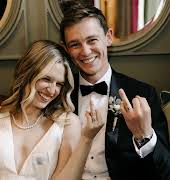US events this week only underline the necessity for a thorough investigation into the shooting of George Nkencho
By Lauren Heskin
08th Jan 2021
08th Jan 2021
Garda Síochána Ombudsman Commission (GSOC) announced this week that there will be a criminal probe into the fatal shooting of George Nkencho, and events in Washington only emphasise the importance of this moment and this investigation.
In Ireland, we sit on a dangerous precipice right now when it comes to race and racism. No longer can we say we’re a world away from the racially charged violence of the United States. Our next steps are vitally important.
Capitol mobbed
The US is currently pondering the shockingly gentle approach of police to the mostly white mob that stormed the US Capitol building in Washington this week. Many commentators and activists have pointed out that the response was significantly tamer than Black Lives Matter protesters received during the summer.
During the widespread and mostly peaceful protests sparked by the murder of George Floyd at the hands of Minneapolis police, law enforcement came out in full riot gear, armed with tear gas, rubber bullets and batons, all of which were used liberally.
Even in protests that were entirely peaceful, law enforcement presence was always extensive and armed, giving even the most family-friendly events a threatening edge.
In Washington, police used tear gas and rubber bullets to clear a square of peaceful protesters so Trump could get a photo op in front of a church.
This compares to videos of Capitol police walking backwards with their hands in the air as the mob entered the Capitol this week, apparently caught completely unaware of the potential danger and organisation that had precipitated the event, even with both houses of Congress in session and hundreds of national politicians on site.
In Ireland
So what has this got to do with Ireland? As Irish singer Loah put it in an Instagram story way back in June, racism is a spectrum. At one end is small acts of unconscious bias, but the other end is death. We hoped that the death reference was one that would always remain an American extreme, a huge scale from which we are just at the beginning. But six months later, that is simply not the reality.
As US activists juxtapose police response to perceived threats from Black and white citizens, we need to do the same.
George Nkencho
George Nkencho was shot five times outside his Dublin home by armed Gardaí on Wednesday, December 30 2020. He had punched a member of staff at a nearby shop and had a knife. Threatening Gardaí to stay away, they followed him at a distance to the front garden of his family home. His sister Gloria said that she answered the door to him and asked members of the Gardaí to leave him alone and that George had mental health problems.
In fact, the Gardaí had been called to the home on a previous occasion regarding a psychiatric incident involving George and the family was awaiting mental health support from the HSE at the time of the shooting.
Gardaí then closed the front door on Gloria. Following the failed use of tear gas, a taser and repeated requests for George to drop the knife, five shots were fired. Three hit George and the other two came through a window into the hall where Gloria and two other siblings stood.
These are instinctive situations where a split second is all you have and An Garda Síochána made a statement that they were concerned George might enter the house and take the family hostage. Even so, the scale of the response seems excessive.
History of fatal shootings
For evidence, you just need to go back and look at previous fatal shootings by Gardaí.
In 2018, Mark Hennessy abducted and killed Jastine Valdez in Wicklow. Gardai shot and killed him while he sat in the driver’s seat of his locked car. He had a knife and Gardaí thought that Valdez was in the boot of the car at the time. After being unable to get into the car, they became concerned that he might use the knife or drive away. He was shot once through the window and died on the scene, having already inflicted knife wounds on himself moments before the shooting.
In 2009, a guard shot dead Gareth Molloy during an attempted armed robbery of a cash-in-transit van. Molloy had a shotgun which he had already fired and was threatening the life of a security guard when he was shot.
In fact, when you look back at fatal shootings by Gardaí in the last 20 years (there have been only six, including George), all of them either had a gun or was assumed to be a direct and immediate threat on the life of someone else.
Contrast those with an incident pointed out on Instagram when in 2014, 19-year-old Jordan Buckley entered the Leinster House building with a sword and concealed knives. He was arrested and received 200 hours of community service.
Now does the response to George Nkencho seem excessive? It brings to mind those photographs of American white mass shooters being gently led out in handcuffs, brought for McDonalds (this actually happened), or allowed to run riot around government buildings.
So when we talk of George Nkencho’s death we also have to talk about racism in all its guises. And when we talk about George Nkencho’s death we have to talk about scale. The scale of the response and the scale of racism, which starts with minor biases and ends in death.
Let’s hope these elements are considered in the upcoming GSCO investigation.
Featured image via Amanda Ade on Instagram
Read more: What exactly is going on Washington DC: An explainer of the Capitol riots
Read more: Tackling the bystander effect: What to do when you witness racism
Read more: Racism in Ireland is on the rise, but are we still listening?























